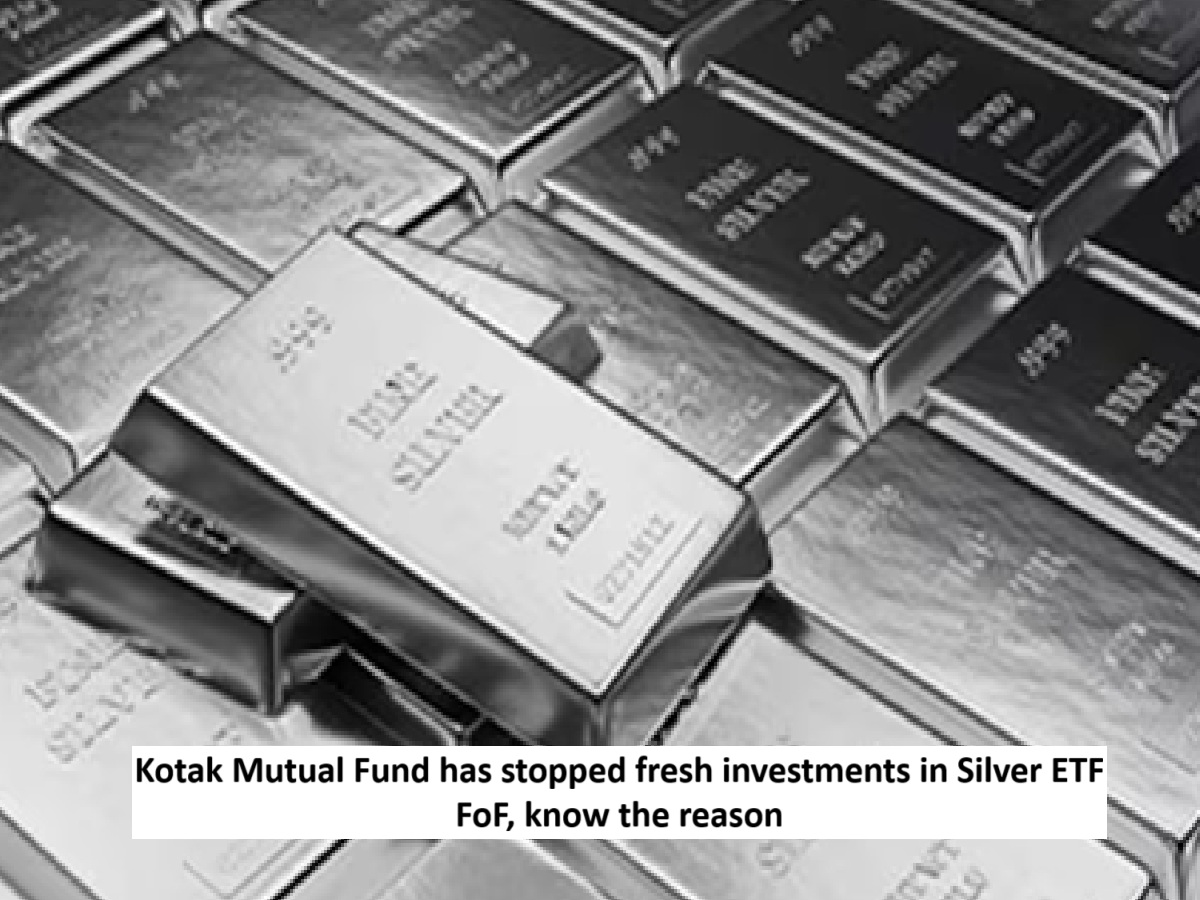
News Topical, Digital Desk : Kotak Mutual Fund recently announced a temporary moratorium on lumpsum and switch-in investments in its Kotak Silver ETF Fund of Funds (FoF). Nilesh Shah, Managing Director of Kotak Mahindra AMC, attributed the move to rising prices and unreasonable market premiums, which could harm investors.
Nilesh Shah said that if the global price of silver is $50 per ounce and the dollar rate is 90 rupees, then the price, including import duties and GST, is approximately 5,000 rupees. However, the price of silver in India has currently reached 5,500 rupees. This difference is unusual and could be due to a shortage of physical silver, shipment delays, short-covering, or festive demand.
Shah explained that this premium means that investors in the ETF are buying silver for 5,500 rupees instead of 5,000 rupees. Kotak's FoF also invests in this ETF, which would have caused investors to make unnecessary extra payments. This ban has been imposed to address this situation. Nilesh Shah said that this decision was taken for investor safety and that other fund houses may soon take similar steps. However, Shah believes this is a temporary situation. He cited the example of how the Hunt Brothers drove silver prices to $50 in 1980. However, people melted silver, restoring supply. He argued that such unusual premiums don't last long. Is the gold and silver rally based on sentiment? Nilesh Shah argues that gold and silver have no valuation fundamentals; their prices are based on trust and perception. When Western countries imposed restrictions on Russia's forex reserves, central banks began buying gold rapidly, leading to a rise in its price. He noted that a similar trend was observed with silver. The gold-silver ratio is high, and there is industrial demand for silver. In August, rumors circulated that Saudi Arabia's central bank had purchased silver ETFs. Will central banks continue to buy gold? Nilesh Shah said that if central banks start selling gold, prices will fall. However, if they continue buying, prices will remain stable or even rise. China officially holds 2,300 tons of gold, but estimates suggest it's as high as 3,000 tons. The US holds approximately 8,000 tons. Therefore, it's clear that China would want to buy more. The power of AI is currently driving a surge in prices, not just gold and silver, but also industrial metals like copper and platinum. This is due to massive investment in AI data centers and a weak dollar. This has boosted commodity demand worldwide, and more than 160 countries have cut interest rates. However, if inflation rises again, these interest rate cuts could be halted, impacting the entire world. Where should investors invest? Nilesh Shah believes investors should not invest more than 10–12% in gold and silver. This is good for preserving capital, but equities currently appear better for maximizing returns. Equity valuations have improved. The government is encouraging growth, and a trade agreement with the US will further boost growth.
--Advertisement--

 Share
Share



